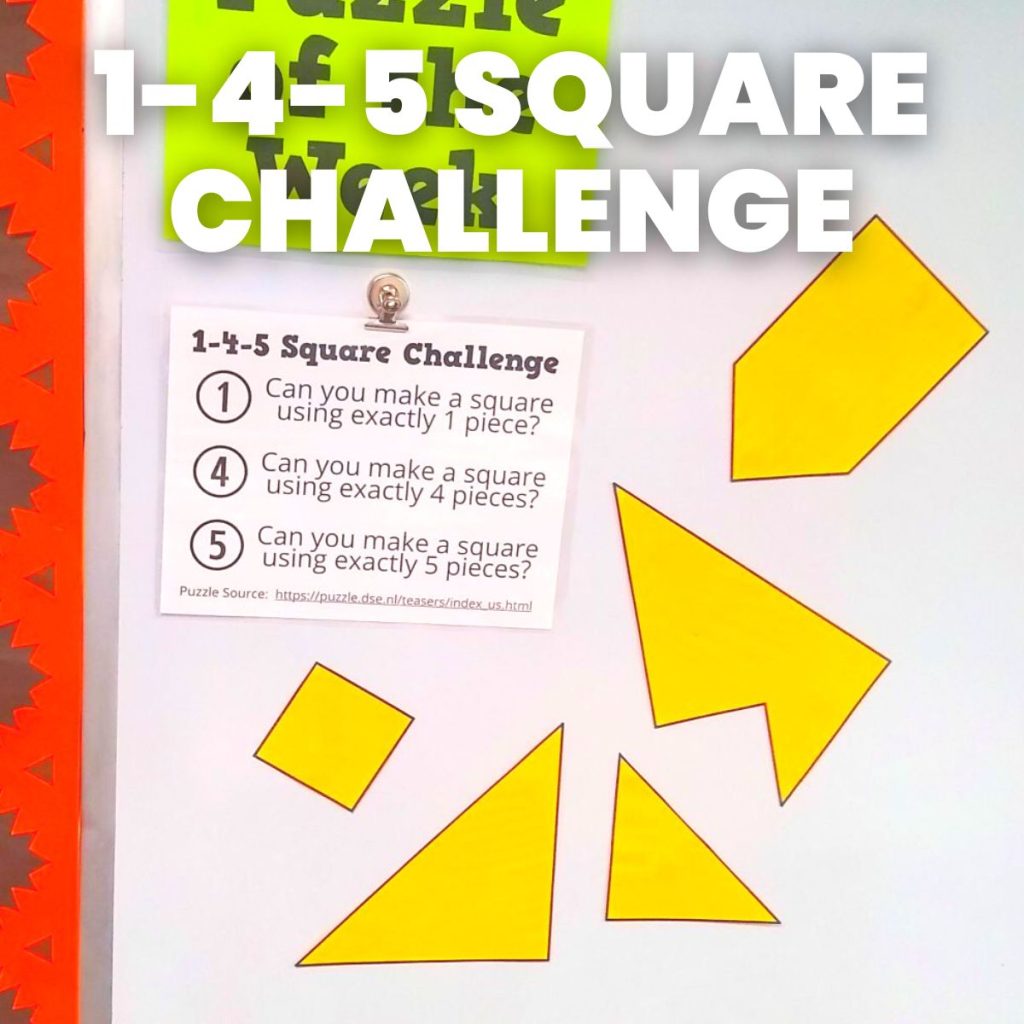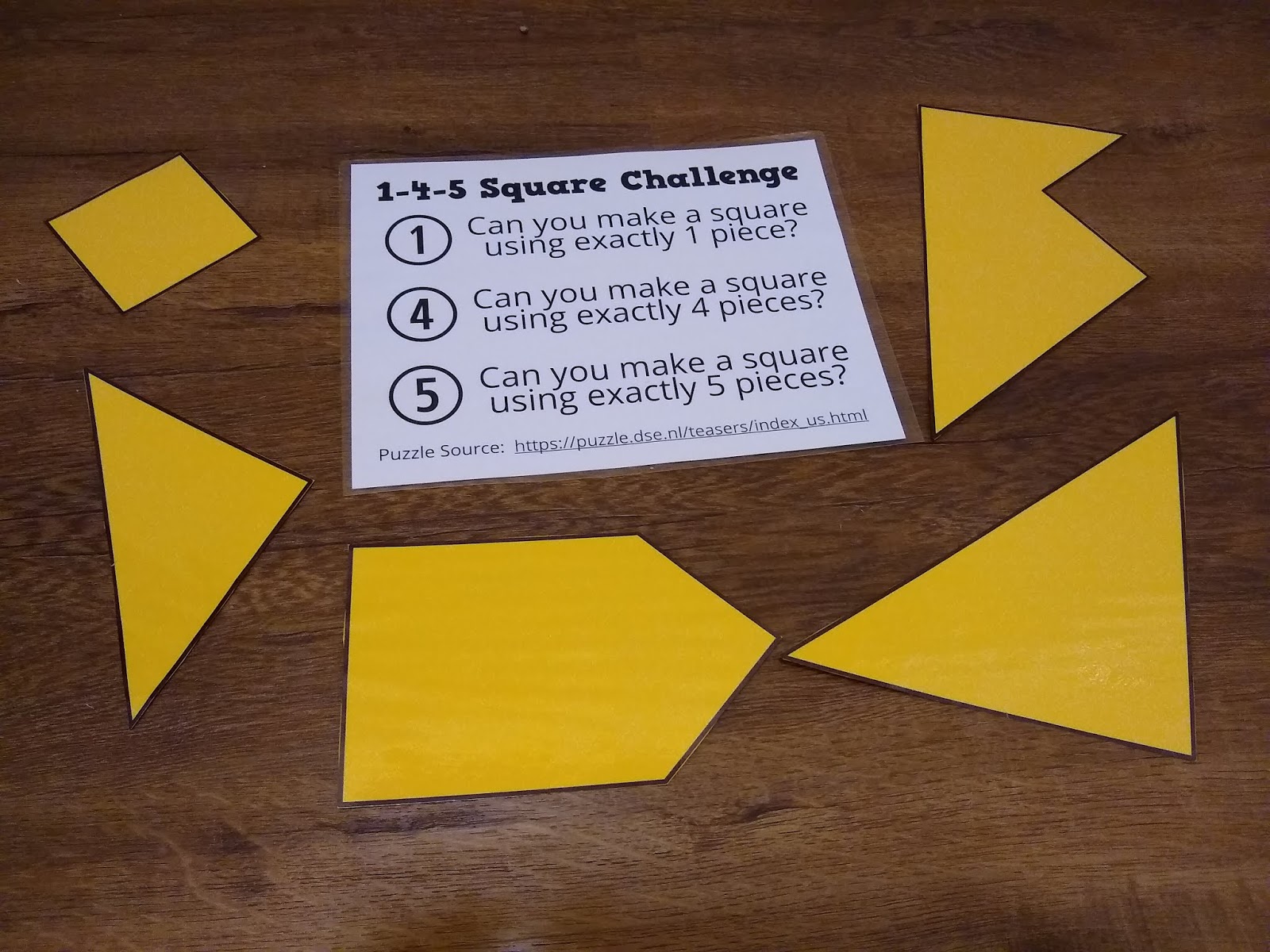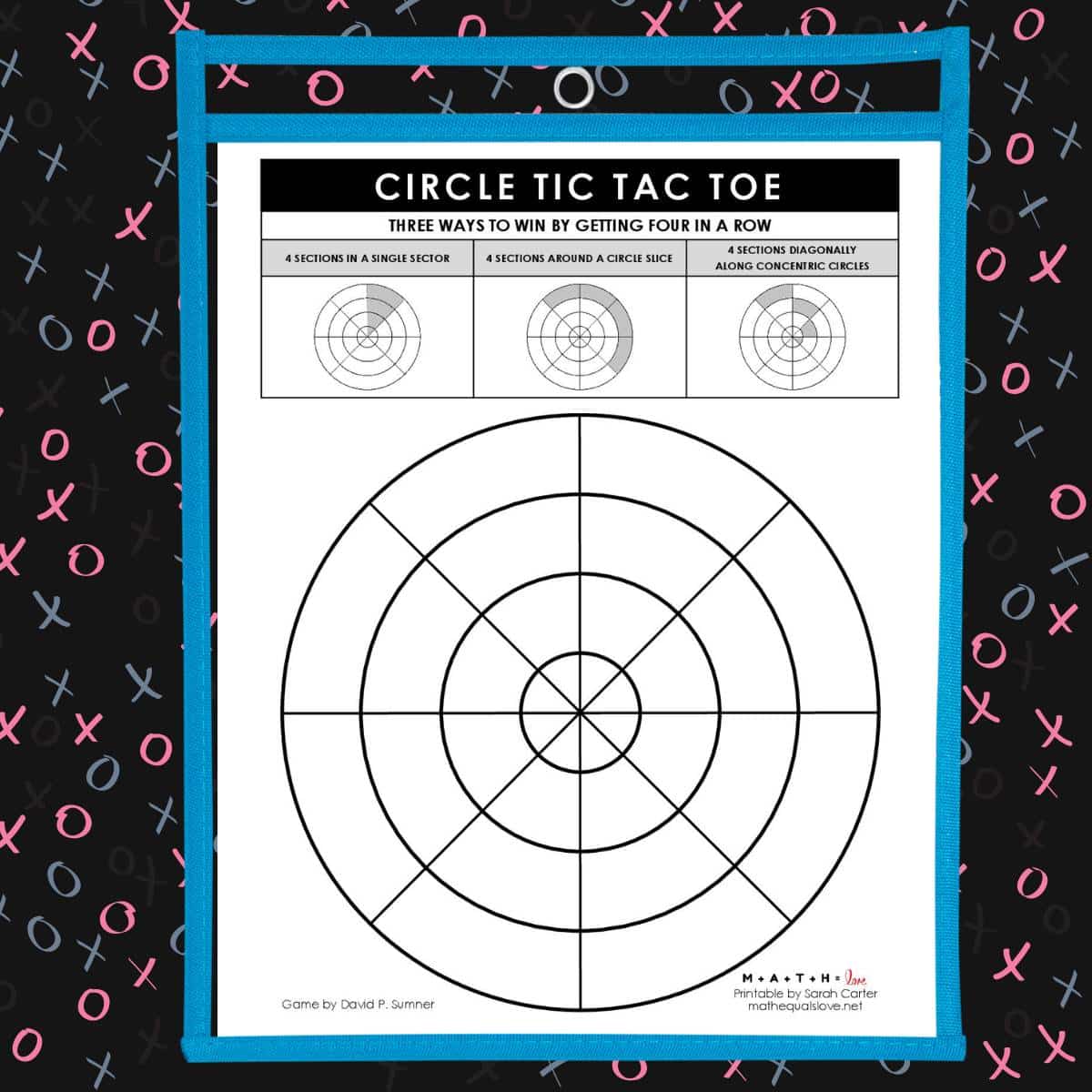1-4-5 Square Challenge
This blog post contains Amazon affiliate links. As an Amazon Associate, I earn a small commission from qualifying purchases.
In my last post, I shared the Square Pi Puzzle and mentioned that I was updating some older puzzles that have been long-time favorites of my students. Today, I want to share another updated puzzle, the 1-4-5 Square Challenge.

Looking for more first day of school activities and puzzles for your classroom? I have a giant blog post dedicated to 40+ activities for the first week of school.
Here’s a few examples of some of these engaging activities for the beginning of the school year.
I originally shared this puzzle on my blog in May 2015 which seems like an eternity ago now.
Since then, I’ve changed classrooms three times, changed school buildings twice, changed school districts once, traveled internationally for the first time, got engaged, spent 20 weeks in Australia, got married, completed a masters program, went through the craziness of being a finalist for Oklahoma Teacher of the Year, moved to be closer to family and for my husband to attend grad school, bought our first house, and had a baby.
Wowzers. Life has definitely changed a lot in what is a relatively short amount of time!
Back to the challenge.

Students are given five pieces to be assembled in 3 challenges that follow one right after the other.

Challenge 1: Use exactly one piece to form a square.
Easy, right?
Challenge 2: Use exactly four pieces to form a square.
Much harder, right?
Challenge 3: Use exactly five pieces to form a square.
This is usually where students hit a road block. How in the world can I make a square with both exactly four of the pieces and all five off the pieces? It is possible. I promise.
I originally found the puzzle on a Netherlands brain teaser site. The original puzzle only includes the third challenge since it provides the puzzle pieces in the formation of the second challenge. I decided to make it more interesting by adding the first two challenges.
The first challenge is solve-able by all and just for fun. The second challenge is usually solve-able by about half my students when I pose this challenge. And, the third challenge is usually solved by only a handful.

In the past, I’ve always given out the pieces in small ziplock bags and verbally presented the three challenges to students.

For my updated version, I decided to type up the challenges so students don’t have to rely on my verbal instructions.
Then, just like the pi puzzle, I had to make a jumbo version that can be used on a large table or posted on a dry erase board with magnetic pieces.

I’ve been asked a lot recently about what type of magnets I use in my classroom. I discovered that you can buy ceramic disc magnets in bulk from Amazon, and those have been my go-to ever since. They are reasonably priced and strong to hold things up without them sliding down the dry erase board.
I’m getting close to finishing up my 2nd box of 200 magnets, so to say that I love these magnets is an understatement. Why do I need so many magnets, you ask? I blame my puzzle of the week!
File for 1-4-5 Square Challenge
Click here to SAVE the file to your device.
1-4-5 Square Challenge (PDF)
13185 saves – 139.20 KB
Looking for more puzzles? Check out my puzzles page with hundreds of free printable puzzles.
Puzzle Solutions
Puzzle solutions are available on a password-protected solution page. I do not openly post the puzzle answer keys because one of my goals as a resource creator is to craft learning experiences for students that are non-google-able. I want teachers to be able to use these puzzles in their classrooms without the solutions being found easily on the Internet.
Please email me at sarah@mathequalslove.net for the password to the answer key database featuring all of my printable puzzles and math worksheets. I frequently have students emailing me for the answer key, so please specify in your email what school you teach at and what subjects you teach. If you do not provide these details, I will not be able to send you the password.
Not a teacher? Go ahead and send me an email as well. Just let me know what you are using the puzzles for. I am continually in awe of how many people are using these puzzles with scouting groups, with senior adults battling dementia, or as fun activities in their workplace. Just give me enough details so I know you are not a student looking for answers to the puzzle that was assigned as their homework!














I used this puzzle in a different way for my science classes. I would only give out the four pieces, and tell students each piece represents some type of observational data that scientists have to make "fit". Students can typically get this square quickly. When they do, I give them the 5th piece and tell them they now have to incorporate this new data into their idea, which means it has to change quite a bit! It's a pretty quick and easy way to show the nature of science!
Wait, WHAT? You had a baby? Talk about BURYING THE LEAD! Congrats!
Obviously you don't want this blog to become a parenting blog, but a pic now and then would be nice- like when you are teaching your kiddo how to do calculus before he or she gets to kindergarten…
Congratulations on your baby!